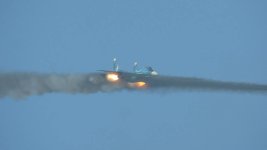[🇧🇩] Bangladesh named The Economist's 2024 country of the year
- By Bilal9
- Bangladesh Strategic Affairs
- 1 Replies
In 2023 the prize was given to Greece for dragging itself out of a long financial crisis and re-electing a sensible centrist government
Illustration: TBS
Bangladesh has earned the title of The Economist's Country of the Year, surpassing Syria, Argentina, South Africa, and Poland for its remarkable progress.
Every year, The Economist chooses one country that has shown the most remarkable improvement over the past year and this year Bangladesh was given the honour.
Previous winners include Colombia (for ending a civil war), Ukraine (for resisting an unprovoked invasion) and Malawi (for democratising).
In 2023 the prize was given to Greece for dragging itself out of a long financial crisis and re-electing a sensible centrist government, read a report published by The Economist.
The Economist clarified in its report that the winner is not the richest, happiest or most virtuous place, but the one that has improved the most in the previous 12 months.
The report said Bangladesh has overthrown an autocrat. In August, student-led street protests forced out Sheikh Hasina, who had ruled the country of 175 million for 15 years. A daughter of an independence hero, she once presided over swift economic growth. But she became repressive, rigging elections, jailing opponents and ordering the security forces to shoot protesters. Huge sums of money were stolen on her watch.
"Bangladesh has a history of vengeful violence when power changes hands. The main opposition party, the BNP, is venal. Islamic extremism is a threat. Yet the transition has so far been encouraging," read the report.
The report further said a temporary technocratic government, led by Muhammad Yunus, a Nobel peace prize winner, is backed by students, the army, business and civil society and "has restored order and stabilised the economy".
"In 2025 it will need to repair ties with India and decide when to hold elections – first ensuring that the courts are neutral and the opposition has time to organise. None of this will be easy. But for toppling a despot and taking strides towards a more liberal government, Bangladesh is our country of the year," the report further stated.
The runner-up
According to The Economist report, Syria was the runner-up and a late entrant in the race.
The ousting of Bashar al-Assad on 8 December ended half a century of depraved dynastic dictatorship. In just the past 13 years civil war and state violence have killed perhaps 600,000 people.
The report highlighted that Assad's regime employed chemical weapons and mass torture against perceived opponents and turned to large-scale drug trafficking to fund its operations. His eventual downfall brought both joy to Syrians and humiliation to his autocratic allies – Russia, which provided air power for barrel bomb attacks, and Iran, which saw Syria as a key part of its "axis of resistance" alongside Hamas and Hizbullah.
"Assad was easily the worst tyrant deposed in 2024. But the quality of what replaces him matters, too. Hayat Tahrir al-Sham (HTS), the most powerful rebel group, which now controls Damascus and chunks of the rest of Syria, has been pragmatic so far," the report said.
"But until 2016 it was affiliated with al-Qaeda, and for some years it governed Idlib province competently, but repressively. If HTS gains too much power, it may impose an Islamist autocracy. If it has too little, Syria may fall apart," the report added.
The report is based on The Economist article posted on the verified Facebook page of Chief Adviser GOB (Government of Bangladesh).

Bangladesh named The Economist's country of the year
In 2023 the prize was given to Greece for dragging itself out of a long financial crisis and re-electing a sensible centrist government












